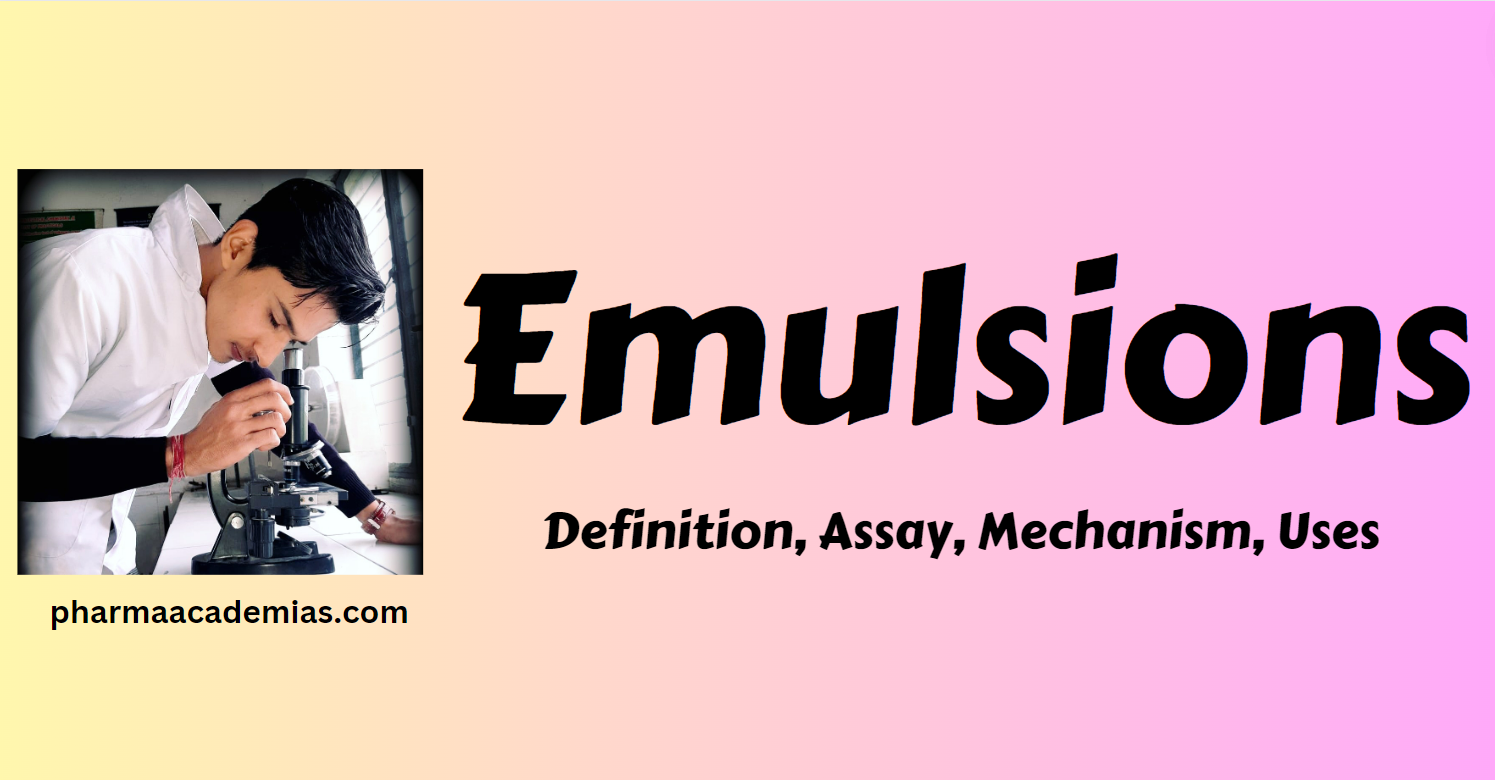Emulsions – Definition, Classification
Emulsions are colloidal dispersions of two immiscible liquids, typically oil and water, stabilized by an emulsifying agent. In an emulsion, small droplets of one liquid are dispersed throughout the other liquid. The emulsifying agent helps to prevent the droplets from coalescing and separating. Various forms of emulsions exist, including oil-in-water (O/W) emulsions, in which water … Read more










